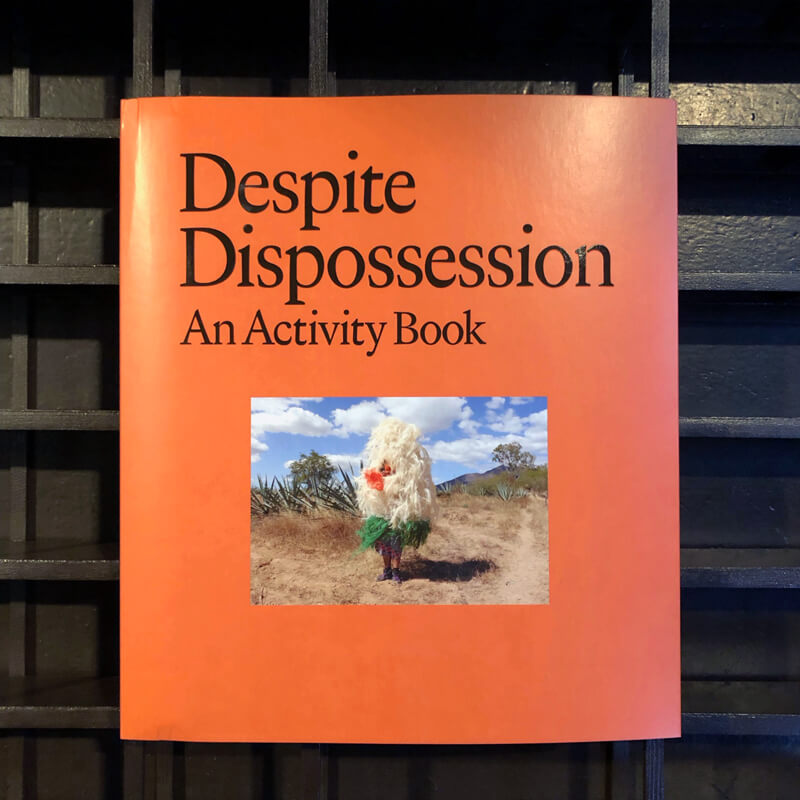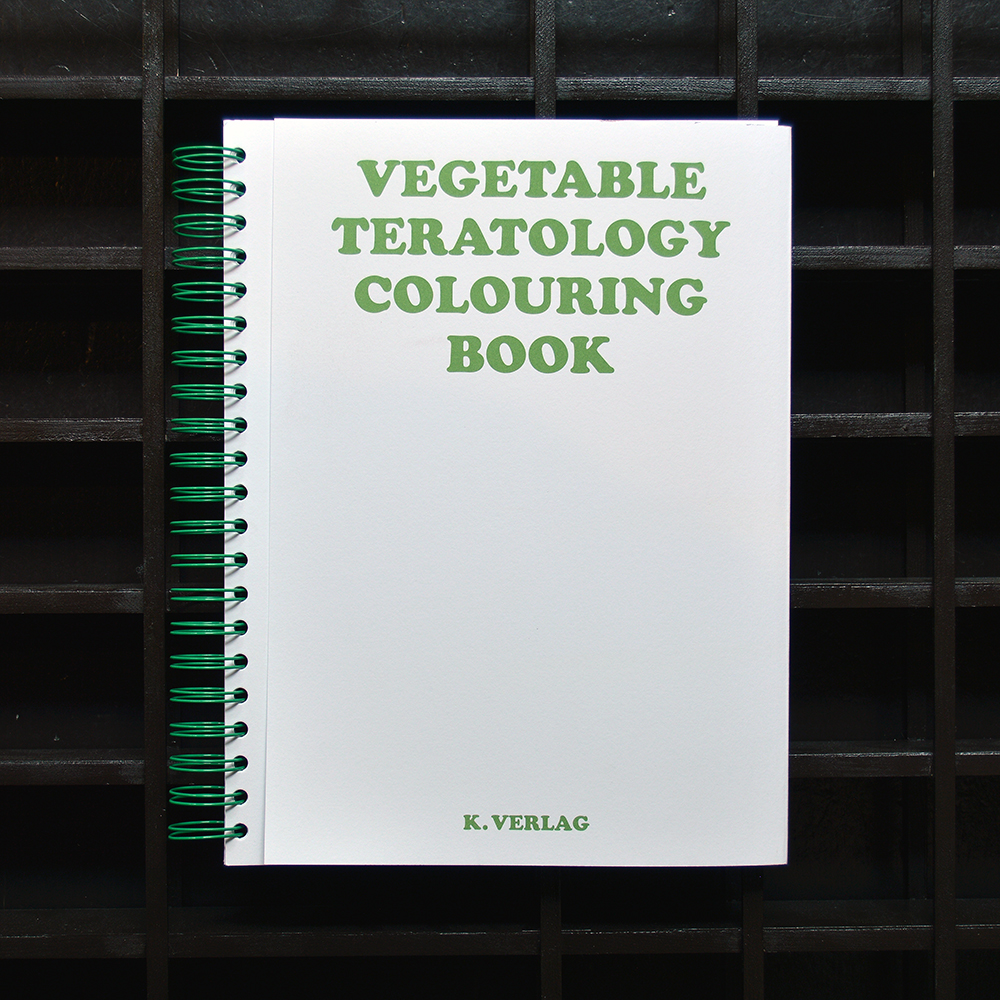** Our bookshop in Berlin-Mitte has closed ** Orders available only via www.bomdiabooks.de **

Let’s say a blank page is not actually blank. In fact, let’s say it is anything but blank. Devoid of colour, yet infinitely colourful; full of possibilities for multicoloured pens and literally covered by multitudinous life forms. It turns out that even the emptiest page is technically more than full – it’s alive. Do microbes respond to colour on paper? Can spontaneous doodles give rise to new species? Based on Antonie van Leeuwenhoek’s term for microorganisms, this age-fluid book considers a world where the smallest is suddenly in control of the largest. Its illustrations function as an exploration into morphological occurrences, rejecting the goal-oriented, the figurative and the categorical. Following a traditional format, these pages attempt to open up a creative bypass. To draw is to embrace mutational forms, and to colour in these pages is to understand that many possible forms may emerge as a bear or a bacterium. We are what we draw. Time then to let those animalcules express the possible colours of kingdoms to come. ↑ ↓ ↓
€19,00
SOLD OUT

As transnational extractivism, neo-fascist politics, and economies of abandonment and disposability expand around the world, can we facilitate situated practices of storytelling and worldmaking that enliven futures propelled by the forces of indignation, desire, and relationality? Despite Dispossession: An Activity Book extends an invitation to restore and reinvent bonds of reciprocity with the land, humans, and non-humans, while envisioning transformative and shared horizons. This collaborative endeavor takes as its point of departure the contested realities and public struggles of the dispossessed. Bringing together seven site-sensitive engagements, the contributors develop their artistic works, as well as speculative tools and activities, to conjure worlds to come in the ruins of dispossession. The result is a combination of subtle theoretical reflection, pluriversal modes of inquiry, and unruly epistemic intervention. Drawing its inspiration from decolonizing methodologies, Black aesthetics, and epistemologies of the South, the project gathers these influences for a novel experiment that demonstrates how arts-based researchers confront dispossession through itinerant practices of resistance. ↑ ↓ ↓
€26,00
SOLD OUT

The problem with coloring books is that they seem to be more about filling time rather than a page. It’s as if they suggest that there is no negotiation involved in the processes which give shape to things on paper, or the subjects they depict. Shouldn’t geometry, scale and proportion be as wild on paper as they are in the wild? This small book is not about censorship, nor is it explicitly about the colouring-in of vegetables: the full-page figures from Maxwell Tylden Masters’s Vegetable Teratology: An Account of the Principal Deviations from the Usual Construction of Plants (1869) are not bound to botany. As abstract illustrations they function as an exploration into morphological occurrences, rejecting the goal-oriented, the figurative, and the categorical. Following a traditional format, the Vegetable Teratology Colouring Book (edited by Nina Canell & Robin Watkins) attempts to open up a creative bypass, embracing the multitude of forms that may emerge as a pear or plum. Time then to draw out the possible colors of fruit to come. In the publication, Masters’s botanical illustrations have been contextualised by a glossary, image captions, and a short text by Robin Watkins. ↑ ↓ ↓
€14,00
SOLD OUT